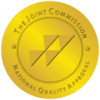What to Expect From an Opiate Detox


Written By
DreamLife RecoveryThere are over 900 opiate-related deaths per week in the United States, on average. Millions of people are addicted to opiates such as heroin or prescription painkillers, and this number is rapidly increasing.
In order to avoid the potentially devastating consequences of opiate addiction, it’s vital to quit. This process can be difficult, if not impossible, to face on your own.
However, there are options for opiate detox that carry high rates of success. With the right treatment and medication, you can quit opiates for good and regain control of your life.
Read on to find out more about what you can expect from an opiate addiction treatment program.
Opiate Addiction
Opiate addiction is a chronic condition that can lead to an array of social, emotional, health, and legal issues.
Opiates are drugs that act primarily on the nervous system, interfering with your brain’s pleasure and reward centers. They can bring feelings of intense pleasure and pain relief, but they can also be incredibly dangerous to your health.
Some opiates are prescribed by doctors in order to manage chronic pain. However, some are obtained illegally or used by people that are not prescribed to take them.
Commonly prescribed opiates include:
- Buprenorphine
- Codeine
- Fentanyl
- Hydrocodone
- Methadone
- Morphine
- Oxycodone
- Oxymorphone
Other opiates, like heroin, are obtained illegally and can be especially dangerous to your health. Regardless of how they are obtained, these drugs all have a very high tendency of being addictive.
Causes of Opiate Addiction
Opiate addiction occurs when the user develops a powerful compulsion to continue using the drug, whether it’s no longer needed medically or obtained illegally on the black market. Addiction can occur even when medications are taken properly as prescribed. This can happen in as little as one use.
Addiction is a term that’s highly stigmatized in society today. It’s been argued that it’s merely a physical dependency on a substance, which is caused by weakness or a lack of willpower. However, studies have shown that it’s more complicated than that.
Opiate addiction is more than just physical dependency on the drug. Addiction is a disease of the brain, a complex condition that is very difficult to overcome on your own. It causes changes in your brain that make it very hard to quit, even if you have the desire to.
The definitive cause of opiate addiction is unknown, but it’s said to be affected by a variety of factors, including past drug abuse issues, family problems, mental health issues, and general personality traits such as thrill-seeking and impulsiveness. Genetics may also play a part, although the correlation of addictions in family members can be caused by similar environment and lifestyle factors as well.
Opiates also change your brain’s chemistry and lead to higher levels of tolerance over time. This means your body needs more in order to achieve the same high, leading you into a vicious cycle that can have severe consequences.
When you’re addicted to opiates, the addiction can completely take over your life, causing you to prioritize getting high above everything else. This can lead to devastating emotional effects, as well as damage to social relationships.
How to Quit Opiates
Although it may seem difficult or even impossible, it’s vital to quit opiates as soon as possible. It’s never too late to begin an opiate detox and regain control of your life.
Once you stop taking opiates, the drug stays in your system until it is gradually metabolized by your liver. During this time, you should be sure to stay hydrated and avoid the use of alcohol and other drugs while maintaining a healthy diet as well.
Because opiates alter the brain’s chemistry, it can be incredibly difficult to quit cold turkey, or suddenly and completely with no looking back. By maintaining your health and seeking treatment, you have a much better chance of being successful.


Common Opiate Withdrawal Symptoms
What makes opiate detox the most difficult is the withdrawal period that closely follows it. The symptoms of opiate withdrawal are severe, and difficult (if not dangerous) to face on your own.
Over time, the body becomes accustomed to having the drug in general. The human body tends to try and maintain homeostasis, which includes the drug’s presence in your system. Without it, your body tries to compensate for the imbalance, leading to withdrawals from your opiate detox.
That’s why, if you suddenly stop using, you can feel very sick. You’re depriving your body of what it’s used to and it’s struggling to correct the chemical imbalance. The symptoms are severe and vary depending on how much time passes following your opiate detox.
Timeline of Opiate Withdrawal
After you stop taking opiates, symptoms of withdrawal begin within six hours of the initial comedown. Opiates that have been prescribed for medical use can be weaned under close doctor supervision; however, individuals who are using illegal and unprescribed drugs do not have the same luxury.
If you’re looking going through symptoms of opiate withdrawal following an opiate detox, it’s urgent to seek professional help in order to get through it. These symptoms are incredibly difficult to face alone and carry a high risk of failure if they’re not accompanied by professional opiate withdrawal treatment.
As time passes following your initial opiate detox, symptoms gradually become more and more severe. The following is a basic timeline of what symptoms to expect and when to expect them.
Immediate Opiate Withdrawal Symptoms (6-30 hours)
- Muscle aches
- Irritability/agitation
- Depression
- Difficulty concentrating
- Racing heartbeat
- Difficulty sleeping
- Watery eyes
- Excessive yawning
- Fever
- Sweating
- Runny nose
Later Symptoms of Opiate Withdrawal (~72 hours)
- Nausea
- Diarrhea
- Vomiting
- Extreme drug cravings
- Stomach pain
- Depression
- Goosebumps
- Rapid heartbeat
- Hyperactivity
- Paranoia
- Elevated blood pressure
- Dilated pupils
Especially during the later symptoms of opiate withdrawal, the risk of relapse becomes very high. It’s vital to seek assistance so you’re not left to face it on your own.
Possible Opiate Overdose
There’s no denying that opiate detox can lead to agonizing withdrawal symptoms that you’ll do anything to escape from. It can be extremely tempting to return to the drugs in order to find relief. However, it is vital to get through them and avoid relapsing at all costs.
While you are going through opiate detox, your chances are much higher to overdose from relapsing. This is because opiate detox lowers your body’s tolerance to the drug. In other words, if you use the same amount you typically did before, it can quickly become too much for your body to handle.
Due to the effects of opiates on your brain’s receptors that affect breathing, too much of them can quickly have you unconscious and not breathing, which can lead to a coma or even death. Those who are going through opiate detox are especially vulnerable to overdose and should seek professional opiate withdrawal treatment in order to avoid overdosing from a relapse.
Looking To Defeat Addiction?
Get Help TodayGetting Through Opiate Withdrawal Symptoms
Detoxification is the first step towards recovering from opiate addiction. This is the process of removing all traces of the drug from the body, allowing it to heal and grow to become normal again.
The opiate detox process brings about an array of uncomfortable symptoms that can be difficult to face alone. Those who have made it through symptoms of opiate withdrawal highly recommend staying in a quiet, comfortable environment while you’re facing the worst of it. Be sure you’re minding your health by getting enough sleep, getting some exercise, and avoiding all other drugs, including alcohol.
While detoxification occurs naturally in the body via the liver, taking the natural route for opiate detox can be difficult, time-consuming, and carry a high risk of failure. Luckily, there are other options to recover that are medically assisted and much more likely to succeed.
Opiate Withdrawal Treatment & Detox
There are multiple ways to approach opiate detox, as well as its withdrawal symptoms. They vary in effectiveness based on the individual as well as the method of treatment.
Opiate Detox at Home
Also known as the “cold-turkey” method, this involves suddenly stopping opiates and waiting out the symptoms of opiate withdrawal on your own, without professional intervention. Eventually, the liver will complete the opiate detox, but not without a great deal of pain and suffering in the process.
Although opiate withdrawal symptoms are not fatal themselves, they can cause major complications, including relapse and fatal overdose. The success rate for the cold-turkey method is extremely low and is generally not recommended to anyone looking for opiate detox.
Medication-Assisted Treatment for Opiate Detox
Medication-assisted treatment (MAT) involves combining medications with behavioral therapy in order to reduce, and eventually eliminate, a person’s dependency on opiates.
Because the symptoms of withdrawal following an opiate detox are so severe, MAT involves the use of certain medications that can ease these symptoms until the detoxification process is complete.
Methadone
Methadone is a long-acting opioid that affects the same part of the brain as the opiates did, without getting the user high. This drug carries a high rate of success and is administered under close medical supervision in a professional rehabilitation setting.
Methadone can also be used in a long-term setting to help the patient cope with extended symptoms of drug dependency. The levels are gradually decreased over time until the patient is finally ready to quit for good. Some patients stay on methadone for years in order to deal with lingering drug dependency following an opiate detox.
Since it acts in a way that’s similar to opiates, methadone can ease the symptoms of opiate withdrawal until the opiate detox is complete. With proper administration, it can help patients give up opiates for good.
Buprenorphine
Buprenorphine is a shorter-acting drug than methadone but is often preferred for treatment due to its reduced risk of fatal overdose. It affects the same areas of the brain as opiates and methadone, but to a much lesser degree.
Buprenorphine can be used in combination with naloxone, which is a drug meant to combat the fatal effects of an overdose. As with other medications, its use is medically supervised and often accompanied by other forms of therapy.
Naltrexone
Naltrexone is another drug that also affects the opiate receptors of the brain. It differs from methadone in that it does not alleviate symptoms of withdrawal or drug cravings. Instead, it prevents the patient from getting high on the opiates.
Naltrexone has the highest rate of success when used as part of a broad treatment plan that includes both rehabilitation and behavioral therapy. It can be taken following your medically-assisted detox and has a high rate of success.
Why You Should Choose Medication-Assisted Treatment
The symptoms of opiate withdrawal following an opiate detox can be extremely severe, often leading the user to relapse and possible overdose. That’s why it’s incredibly dangerous and highly ineffective to try and face these on your own.
Contrary to what some people might think, using medications such as Methadone isn’t simply replacing the use of one drug with another. They are used under close medical supervision and are highly regarded for their success rate in the medical field.
These treatments have been shown to be successful in the following areas:
- Increased rates of patient survival
- Improved birth survival rates in pregnant women with substance use disorders
- Increased retention of patient’s treatment
- Decreased opiate use and criminal activity in those with substance use disorders
- Increase rates of employment, as well as abilities to maintain employment
When used in a rehabilitation setting in combination with therapy and aftercare treatment, medication-assisted treatment can help you get through the symptoms of opiate detox while dealing with the mental issues that caused the addiction. With the right methods of treatment, medication-assisted therapy has proven to be successful and is much safer than facing opiate detox on your own.
Seek Treatment Options Now
If you or a loved one is struggling with opiate addiction, it’s urgent to seek treatment as soon as possible. The path of addiction only leads to negative and even fatal outcomes, but it’s not too late to start your opiate detox. With the right treatment and therapy, you can be well on your way towards permanent recovery.
Contact us today to learn more about treatment options.
Resources:
- “The U.S. Opioid Epidemic” – Felter, Claire; Council on Foreign Relations; 16 July, 2020
- “Brain disease model of addiction: why is it so controversial?” – Nora D Volkow, George Koob, The Lancet Psychiatry, Volume 2, Issue 8, 2015, Pages 677-679
- “Opioid Addiction” – U.S. National Library of Medicine, MedLine Plus
- “What is Homeostasis?” – Scientific American; 3 January, 2000
- “The Addicts Next Door” – Talbot, Margaret; The New Yorker, June 5-12, 2017 Issue






